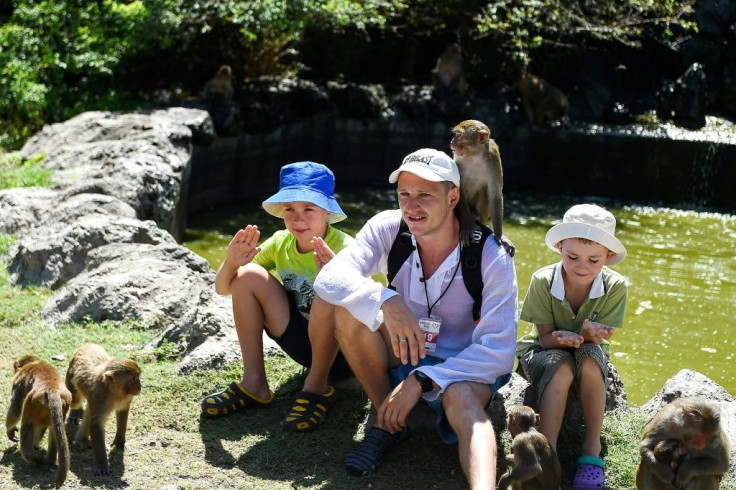People More Willing To Approach 'Cute' Monkeys But Dominant Monkeys Get Closer
KEY POINTS
- Survey results show that people are more willing to approach 'cute' looking monkeys
- In real life, the dominant monkeys get closer to the humans
- This poses possible risks for both the humans and the monkeys
Humans end up getting closer to dominant macaques even if they say that they are more willing to approach cute-looking monkeys. This poses a risk for both humans and monkeys.
‘Cute’ Monkeys
Previous research has shown that humans have a preference for "cute" animals while avoiding "ugly" animals. It is possible, therefore, that perceived attractiveness, cuteness or healthiness might provide clues as to humans' willingness to interact with animals.
For a new study, the researchers asked 227 participants to rate 17 neutral Barbary macaque faces on nine characteristics: dominance, trustworthiness, attractiveness, cuteness, healthiness, socialness, activity, age and sex. They were also asked how close they would be willing to get to approach, feed or take a selfie with the monkey.
The results revealed that the participants would be more willing to approach the macaques that they rated to be trustworthy, cute, subordinate, female, social and young, suggesting that these are the traits that they deem to be safer to approach.
On the other hand, the primates rated as more dominant were perceived to pose a higher threat and therefore were deemed as less approachable.
These traits, according to the researchers, are also the same things that people look for in human to human interactions wherein people prefer to approach someone with "safer" characteristics because they appear to present lower risks.
Human-Macaque Interactions
Interestingly, the perceived social and health traits were actually correlated to the observed macaque behaviors, which suggests that the people were able to accurately asses the primates' traits and health status by looking at their faces.
Despite these stated preferences, however, real-life observations of human-macaque interactions at a tourist site in Morocco revealed that people actually end up being in closer proximity with the more dominant macaques.
According to the researchers, given that people have intended to approach the more subordinate animals more closely than dominant ones, this suggests that the dominant macaques also play an active role in how close human-macaque interactions can be. This means that the dominant macaques may tend to approach more closely than the humans intended.
"Despite forming these first impressions based on faces, in reality, the interactions we observe don't follow what people say," study co-author Laëtitia Maréchal of the University of Lincoln said. "When people feed wildlife they are more likely to end up close to dominant animals; the ones people claimed to be less willing to approach due to being perceived as less safe."
Wildlife Interactions
According to the researchers, this poses serious concerns when it comes to possible pathogen transmission between the species. As such, certain measures should be placed to reduce the risks posed by closer-than-intended interactions, mostly fueled by food distribution.
"Here our findings suggest that feeding wildlife increases the risks to human safety by bringing dominant animals into greater proximity with humans, who would otherwise be less likely to intend to approach these animals based on their first impression judgment," the researchers wrote in their study published in the journal Scientific Reports. "We suggest that regulating the feeding of wildlife is an urgent requirement to reduce human and animal welfare risks."

© Copyright IBTimes 2025. All rights reserved.






















